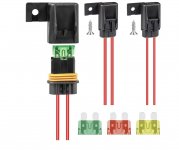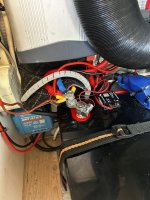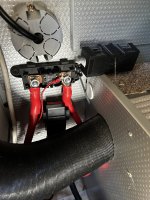Alshymer
Full Member
- Posts
- 623
- Likes
- 297
Hi
Could someone tell me if the fuse holders in the photo with 15 amp fuses are good enough for the cable from solar panels to the controller and from the controller out to the battery?
Thanks
Could someone tell me if the fuse holders in the photo with 15 amp fuses are good enough for the cable from solar panels to the controller and from the controller out to the battery?
Thanks




